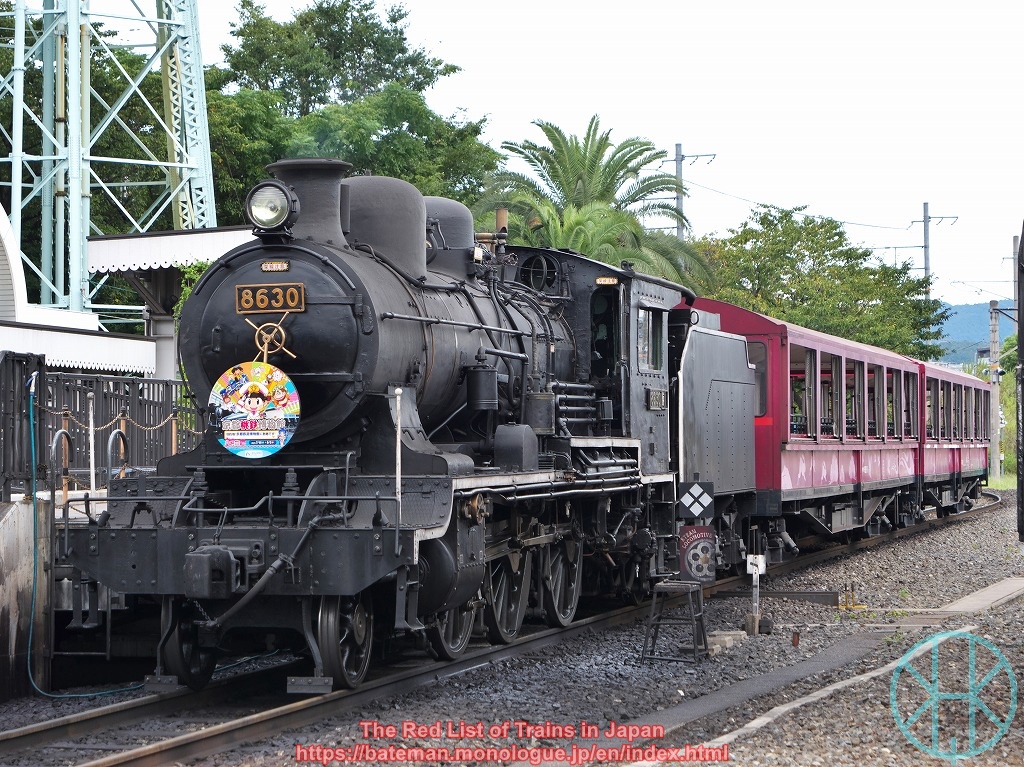Class 8620, The Railway Bureau of the Empire of Japan

Data (as of 31 Mar 2024)
| Status: | Extinct |
| Constructed in: | 1914-29 |
| Number built: | 732* |
| Retired in: | 2024 |
*Including 60 locomotives introduced to private railways and those in occupied territories.
History
Class 8620 was a type of 2-6-0 steam locomotive introduced by the Railway Bureau of the Imperial Government, which became the Ministry of Railways in 1920. At that time, railway operators in Japan heavily depended on imported locomotives from Prussia, the United Kingdom and the United States. The Japanese Government decided to develop and produce its own locomotive specifically designed for railways in Japan. Since the Class 8620 was developed before adopting the current numbering method, all locomotives had four or five-digit numbers with no alphabet.
The Bureau made a plan to use the new domestic locomotive in several "second-class railways" including Tohoku Main, Ou Main and Kagoshima Main Lines. The Class 8620 was therefore smaller than those for "first-class railways" (Tokaido Main and San-yo Main Lines), but instead the Class 8620 could easily run tracks with curves and steep gradients.
The Railway Bureau (and later the Ministry of Railways) introduced 672 locos. In addition, Railway Bureau of South Sakhalin introduced 15 locos, railway department of the Government-General of Taiwan had 43 locos, and two were introduced by a private company called Hokkaido Takushoku Railway.
The Class 8620 had long been used across the country as it was useful for both passenger and freight trains. Notable examples were boat trains between Tokyo and Yokohama port, express services on Tokaido Main Line and several imperial trains. The locos were gradually reallocated to branch lines and rural railways from the late-1930s. 14 locos were transferred to South Sakhalin by requisition during the Second World War, and all but one in Sakhalin were deregistered in 1946 as the USSR seized them.
After the War, Japanese National Railways decided to stop using all steam trains by 1975, but it priotised replacing large and powerful locos on major routes rather than those for rural lines and shunters. Hence, despite being old, the Class 8620 remained operational until the very end. The last service was freight trains on Yunomae Line in Kumamoto Prefecture (now Kumagawa Railway).
In 1988, JR Kyushu restored one (no. 58654) commemorating the 100th anniversary of railway in Kyushu. It had been used for SL Aso Boy (Kumamoto - Miyaji) until 2005 when a fatal breakdown was found. The loco was due to be stored in a museum, but engineers overturned the decision by fixing it. The repair work took more than two years and the loco was reinstated in 2009. However, it is effectively a Ship of Theseus as almost of all components, frames and a boiler were replaced with completely new ones. It retired in 2024, less than a year after its 100th birthday.
Though not for mainline use, no. 8630 has been preserved at Kyoto Railway Museum and sometimes runs. It was active from 1914 to 1972, and still hauls a few coaches for children today.
